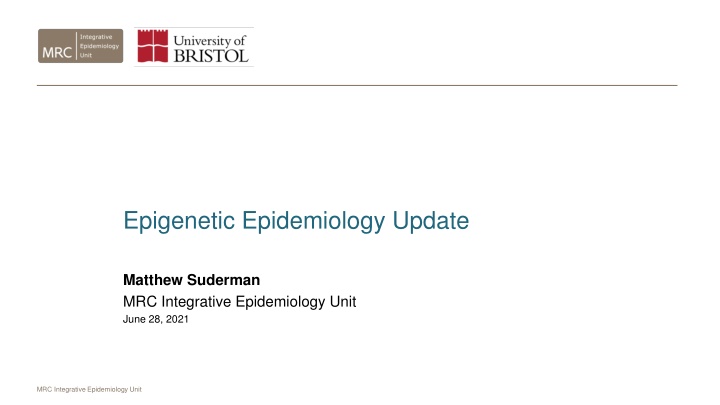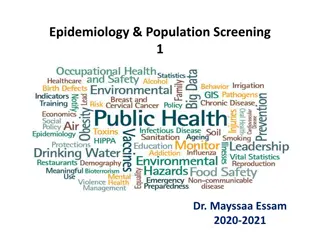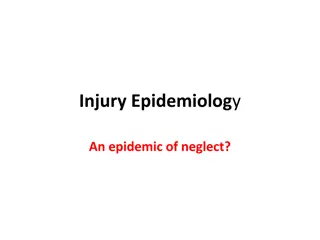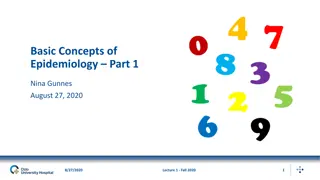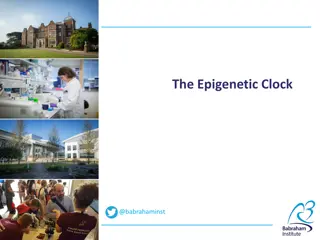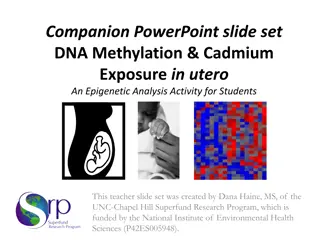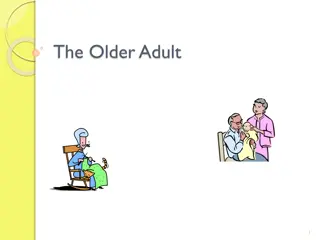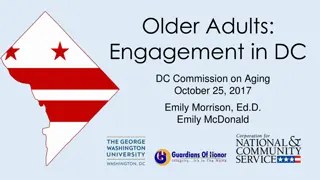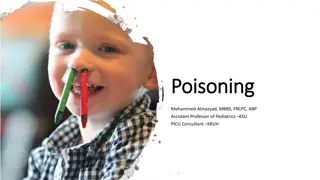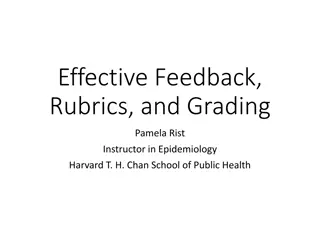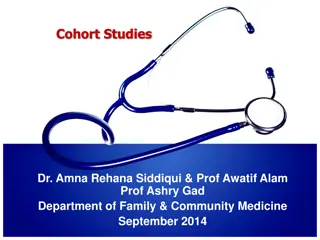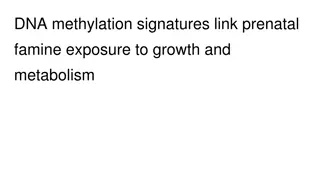Epigenetic Epidemiology Update: EWAS in Children and Adults
In this update, various studies on epigenetic epidemiology are discussed, including findings on DNA methylation in children and adults, genetic-environment interactions, maternal influences on offspring health, and gene set enrichment for EWAS analysis. The research covers a range of topics such as prenatal environmental factors, telomere length, childhood adversity, mammographic density, and Alzheimer's disease. These studies provide valuable insights into the complex interplay between genetics, environment, and disease risk.
Download Presentation

Please find below an Image/Link to download the presentation.
The content on the website is provided AS IS for your information and personal use only. It may not be sold, licensed, or shared on other websites without obtaining consent from the author.If you encounter any issues during the download, it is possible that the publisher has removed the file from their server.
You are allowed to download the files provided on this website for personal or commercial use, subject to the condition that they are used lawfully. All files are the property of their respective owners.
The content on the website is provided AS IS for your information and personal use only. It may not be sold, licensed, or shared on other websites without obtaining consent from the author.
E N D
Presentation Transcript
Epigenetic Epidemiology Update Matthew Suderman MRC Integrative Epidemiology Unit June 28, 2021 MRC Integrative Epidemiology Unit
EWAS in children PMID Phenotype Tissue Study population Assocs 5850 variably methylated regions1, of which 70% GxE, 17.7% G, 12.3% G+E, 0.03% E best explanation genotype and 12 prenatal environmental factors 301 NICHD Fetal Growth Studies Singletons 34155504 placenta 34116986gestational diabetes mellitus cord blood 536 FinnGeDi cohort 1 47 (76% of var(TL) at baseline) and 31 (72% of var(TL) at age 4.5) null at baseline, trajectories in 6 regions moderated by adversity2 34086604telomere length cord blood saliva (5X age 3-5) 173 children 247 34095363childhood adversity 1not really an EWAS of variation: VMR=cluster of CpG sites with top 10% MAD 2trajectories evaluated as interaction effects (i.e. methylation ~ adversity x time point); regions identified by combining interaction statistics using Comb-p. MRC Integrative Epidemiology Unit
EWAS in adults PMID Phenotype Tissue Study population Assocs 34116608mammographic density blood blood (pre- diagnostic) 385 postmenopausal women 96 pairs of women with breast cancer with low and high density 250 null but so many DMRs using mCSEA 1 (cg05575921), MR evidence of mediation on stroke risk 14 and replicated 24% assocs from previous study 34101077mammographic density common carotid intima-media thickness 34091768 blood 6400 from 9 cohorts 34117263C-reactive protein blood 589 RODAM study 34112773Alzheimer's disease cortex 1408 220 MRC Integrative Epidemiology Unit
A mention in Nature Outlooks! Nogrady B. How a child's heart health could be decided before birth. Nature. 2021 Jun;594(7862):S4-S5. Researchers have found different patterns of DNA methylation in the children of women who were either underweight or overweight before pregnancy. Higher levels of DNA methylation at certain sites in the children of women who were obese were associated with a greater likelihood of obesity in offspring, whereas the opposite was seen in women who were underweight2. 2. Sharp GC, Lawlor DA, Richmond RC, et al. Maternal pre-pregnancy BMI and gestational weight gain, offspring DNA methylation and later offspring adiposity: findings from the Avon Longitudinal Study of Parents and Children. Int J Epidemiol. 2015;44(4):1288-1304. MRC Integrative Epidemiology Unit
Gene set enrichment for EWAS Maksimovic J, Oshlack A, Phipson B. Gene set enrichment analysis for genome-wide DNA methylation data. Genome Biol. 2021 Jun 8;22(1):173. Gometh for CpG sites Goregionfor DMRs both available in the missMethyl Bioconductor R package Problems Probe-number bias Multi-gene bias Solution (same approach as GoSeq for RNA-seq) CpG weight = 1/number of genes Wallenius noncentral hypergeometric test MRC Integrative Epidemiology Unit (approximates enrichment but random sampling better)
Gene set enrichment for EWAS, cont. Maksimovic J, Oshlack A, Phipson B. Gene set enrichment analysis for genome-wide DNA methylation data. Genome Biol. 2021 Jun 8;22(1):173. Compared to ebGSEA, mRRA, mGLM, hypergeometric 1. Control false-positive rate: only mGLM and Gometh 2. Maximize true-positive rate: Gometh highest, often 10% higher than competitors 3. Speed: mRRA fastest followed by Gometh (30 seconds for analysis) Goregion = Gometh applied to CpG sites in DMRs MRC Integrative Epidemiology Unit
Selection bias and inverse probability weighting Carry PM, et al. Inverse probability weighting is an effective method to address selection bias during the analysis of high dimensional data. Genet Epidemiol. 2021 Jun 15. IPW = weight observations by inverse probability of selection N=114 adolescents with DNAm profiles Simulated age and sex sample selection: Scenario Complete population Selected no adjustment Selected with IPW Selected with IPW and bacon Result truth Bias Less bias, genomic inflation Less bias, no inflation MRC Integrative Epidemiology Unit
Mitochondrial copy number Ganel L, et al. Mitochondrial genome copy number measured by DNA sequencing in human blood is strongly associated with metabolic traits via cell-type composition differences. Hum Genomics. 2021 Jun 7;15(1):34. N=19184 Finnish individuals Associated with: Two genetic variants insulin levels and other metabolic syndrome traits (and causal by MR) Polygenic risk score Adjusting for cell counts largely eliminated these signals MRC Integrative Epidemiology Unit
Genetically-derived gene expression and depression Fabbri C, Pain O, Hagenaars SP, Lewis CM, Serretti A. Transcriptome-wide association study of treatment-resistant depression and depression subtypes for drug repurposing. Neuropsychopharmacology. 2021 Jun 22. N=2165 treatment resistant depression vs 11188 controls (UK Biobank) Genetically-derived gene expression for 21 tissues No expression differences identified. Three subtypes of MDD associated with TRD 1. MDD with weight gain (1 gene associated, panel PsychENCODE) 2. Anxious MDD (1 gene associated, panel CMC DLPFC splicing ) 3. Endogenous MDD MRC Integrative Epidemiology Unit
Genetically-derived gene expression and depression, cont Fabbri C, Pain O, Hagenaars SP, Lewis CM, Serretti A. Transcriptome-wide association study of treatment-resistant depression and depression subtypes for drug repurposing. Neuropsychopharmacology. 2021 Jun 22. Of 136,460 compound signatures corresponding to 29,679 compounds: 76 showed negative connectivity score for TRD 41 for anxious MDD 21 for MDD with weight gain These compounds identified not only candidates for repurposing but also mechanisms of action. MRC Integrative Epidemiology Unit
